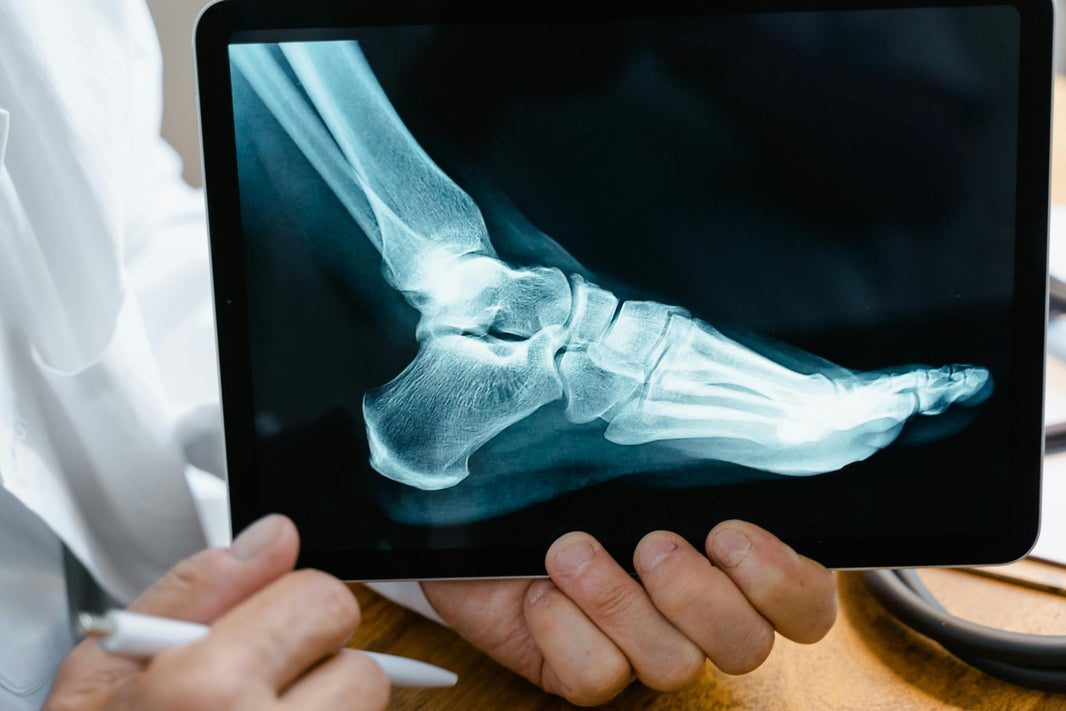Frozen shoulder or adhesive capsulitis is a painful and impending condition that affects the shoulder joint. Characterized by stiffness and limited mobility it can significantly impact daily activities like dressing, reaching overhead or even driving. While physical therapy and stretching are commonly recommended to restore motion, the role of nutrition particularly calcium is often overlooked. Combining targeted stretching with calcium-rich nutrition can form a holistic approach to recovery.
Understanding Frozen Shoulder: The Basics
Frozen shoulder typically progresses in three stages: the freezing stage, the frozen stage and the thawing stage. During the freezing stage inflammation and pain gradually reduce shoulder mobility. The frozen stage brings stiffness and the thawing stage marks the slow return of movement. Recovery can take months or even years emphasizing the need for proactive and supportive strategies.
The Role of Calcium in Joint and Muscle Health
Calcium is essential for maintaining strong bones, healthy cartilage and effective muscle function. Here’s why it matters for frozen shoulder recovery:

- Bone Health: Calcium helps maintain bone density which is crucial for the shoulder joint’s structural integrity. The humerus, clavicle and scapula must remain strong to support the surrounding soft tissues during rehabilitation.
- Muscle Function: Adequate calcium levels enable proper muscle contraction and relaxation reducing the risk of spasms that often accompany shoulder immobility.
- Cartilage Support: Calcium contributes to cartilage health which cushions the bones and prevents further irritation of the shoulder joint.
The Power of Stretching in Frozen Shoulder Recovery
Stretching is a cornerstone of frozen shoulder treatment. It helps improve flexibility, reduce pain, and restore the range of motion. Regular stretching promotes blood flow to the affected area, supporting tissue repair and reducing stiffness.

Recommended Stretches for Frozen Shoulder
- Pendulum Stretch: Lean forward slightly and let your affected arm dangle. Gently swing your arm in small circles increasing the size as your range of motion improves.
- Towel Stretch: Use your good arm to gently pull the affected arm overhead by holding a towel behind your back with both hands..
- Cross-Body Stretch: Lift your affected arm at the elbow with the help of good arm and bring it across your body. Hold for 15-30 seconds and repeat.
- Wall Climb: Stand facing a wall and use your fingers to "walk" your affected arm upward as far as possible. Consistency is key. Incorporating these stretches daily can gradually restore shoulder mobility.
Combining Calcium and Stretching for Optimal Recovery
Calcium intake and stretching complement each other by addressing different aspects of frozen shoulder recovery. Here’s how to integrate the two:
- Enhancing Muscle Recovery with Calcium: Consuming calcium-rich foods such as dairy products, fortified plant-based milk, leafy greens and almonds, supports muscle repair after stretching exercises.
- Supporting Cartilage Health: Calcium’s role in cartilage maintenance can reduce friction within the shoulder joint enhancing the benefits of stretching routines.
- Hydration and Calcium Absorption: Stretching increases blood circulation potentially improving calcium transport to the shoulder joint. Staying hydrated is essential for both.
Foods to Prioritize for Calcium Intake
- Dairy Products: Bioavailable calcium is present in sources like milk, cheese and yogurt.
- Leafy Greens: Kale, spinach, and collard greens provide plant-based calcium.
- Millets: Millets are a nutritious grain that can be a great addition to your diet especially for calcium intake. On average, millet provides approximately 8-13 mg of calcium per 100 grams depending on the variety.
- Fortified Foods: Certain nut-based milk, orange juices and cereals are fortified with calcium.
- Almonds: These nuts are a convenient snack rich in calcium and healthy fats.
- Sardines: Canned sardines with bones offer a calcium boost along with omega-3 fatty acids, which are anti-inflammatory.
Vitamin D: Calcium’s Partner in Recovery

While calcium is critical it needs vitamin D to be effectively absorbed and utilized by the body. Spend time outdoors to get natural sunlight or include vitamin D-rich foods like fatty fish, egg yolks and fortified products in your diet. Supplements are needed especially for individuals with limited sun exposure.
Evidence-Based Benefits: The Big Picture
A balanced approach to frozen shoulder recovery involves addressing both movement and nutrition. Studies have shown that patients who combine physical therapy with dietary changes such as increasing calcium and vitamin D intake experience better outcomes. This holistic strategy supports tissue repair, reduces inflammation and promotes long-term joint health.
Final Thoughts
Recovering from a frozen shoulder is a trip that requires composure and commitment. By integrating calcium-rich foods into your diet and dedicating time to daily stretching exercises you’re setting the stage for stronger, more flexible shoulders. Remember, every small step counts. Consult with healthcare professionals to tailor this approach to your unique needs and embrace the process with confidence. Your path to recovery is within reach.
References
-
Giraldo-Vallejo JE, Cardona-Guzmán MÁ, Rodríguez-Alcivar EJ, Kočí J, Petro JL, Kreider RB, Cannataro R, Bonilla DA, et al, 2023, Nutritional Strategies in the Rehabilitation of Musculoskeletal Injuries in Athletes: A Systematic Integrative Review. Nutrients, 36839176.
-
Chan HBY, Pua PY, How CH. et al, 2021, Physical therapy in the management of frozen shoulder. Singapore Medical Journal, PMC5917053.








